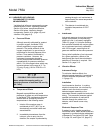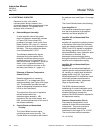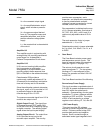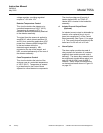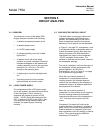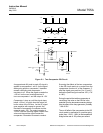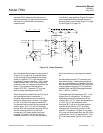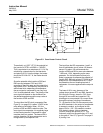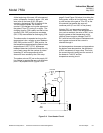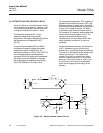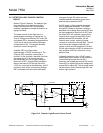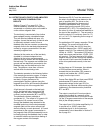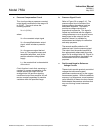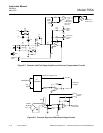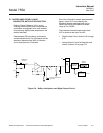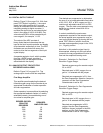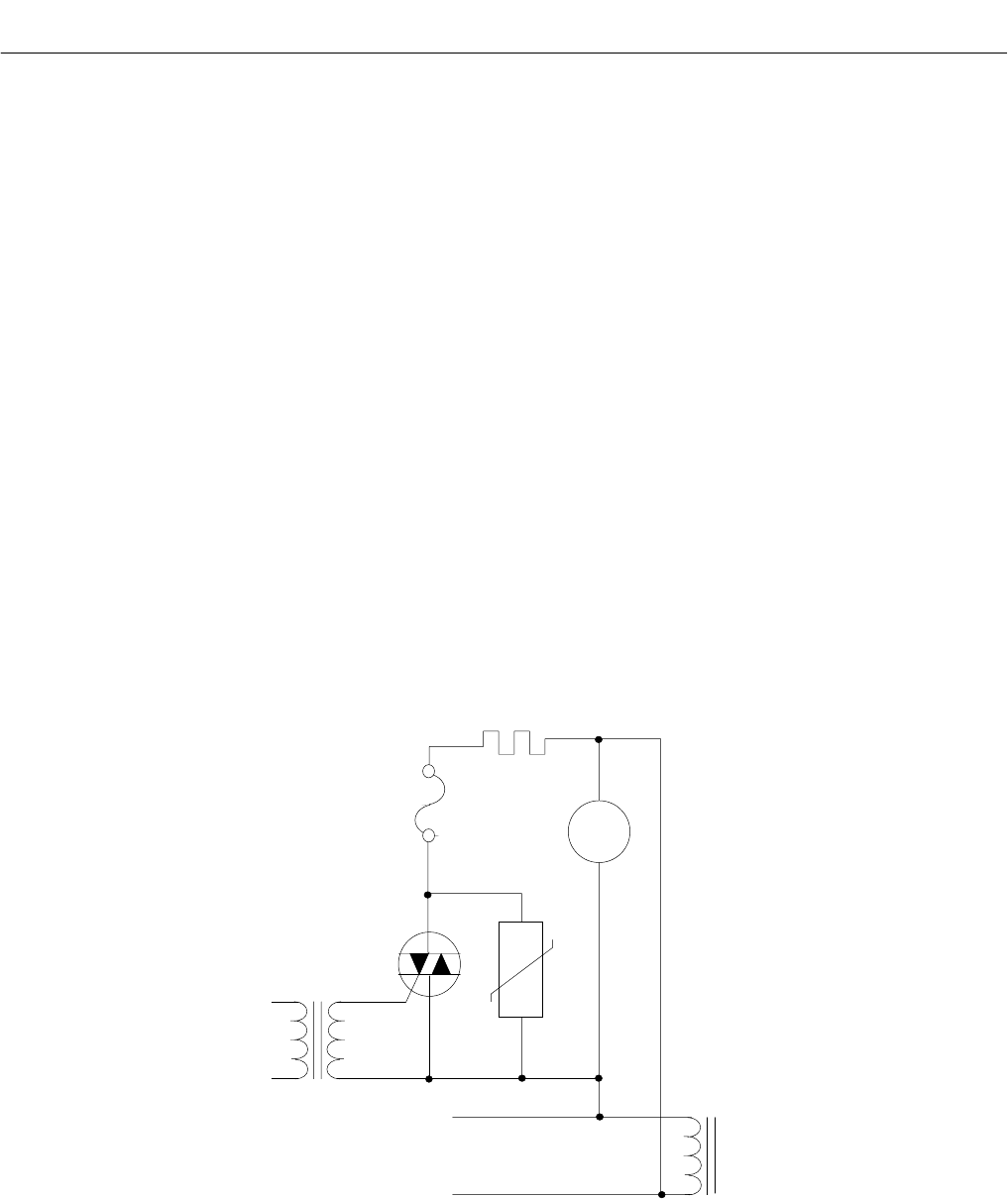
Instruction Manual
245364-V
May 2002
Rosemount Analytical Inc. A Division of Emerson Process Management Circuit Analysis 5-5
Model 755A
T1
FAN
MOTOR
MT2
RV1
MT1
HEATER
HR3
T1
NEUTRAL
HOT
120V
RMS
F2
Q7
At the beginning of the next 100 microsecond
pulse, comparator 4 output is again -15V, with
zero volts on the base of Q6. Q6 again
conducts, discharging C38. At the end of the
100 microsecond pulse, Q6 ceases to
conduct. C38 charges and a pulse appears at
the gate of Triac Q7, turning it on again. The
charging time for C38 is about one-half a time
constant (C38, R87) and ten time constants
(R81, C38) are available for discharging C38.
The above action is repeated as long as the
temperature is low, causing an error between
R82, R83 junction and RT1, R84 junction. As
the temperature approaches the desired case
temperature of 135°F (57°C), differences
between these two junctions will exist for only
part of each ramp and the number of pulses
operating Q7 will be proportional to the
amount of error sensed by the 6 Hz ramp.
The pulses arrive at Q7 just as the supply AC
line voltage is passing the zero-volt crossover
point. The purpose of C36 (Figure 5-2 on
page 5-3 and Figure 5-4 below) is to delay the
timing pulse, relative to line frequency, so that
a pulse arrives at the gate of Triac Q7 as the
line potential just passes the zero-volt
crossover point (0° and 180° of line phase).
Varistor, RV1 is a temperature sensitive
resistance device. When case temperature is
low, such as ambient, the value of RV1 is low.
Applying power at that temperature might
cause a current surge to damage Triac Q7.
RV1 with its low initial value of resistance acts
as a bypass and most of the current is
shunted through it.
As the temperature increases and approaches
the desired case temperature, the resistance
of RV1 increases to a large value. This limits
the current through it and gives fine control of
the heater to Triac Q7 and the
temperature-sensing circuit.
Figure 5-4. Case Heater Circuit



